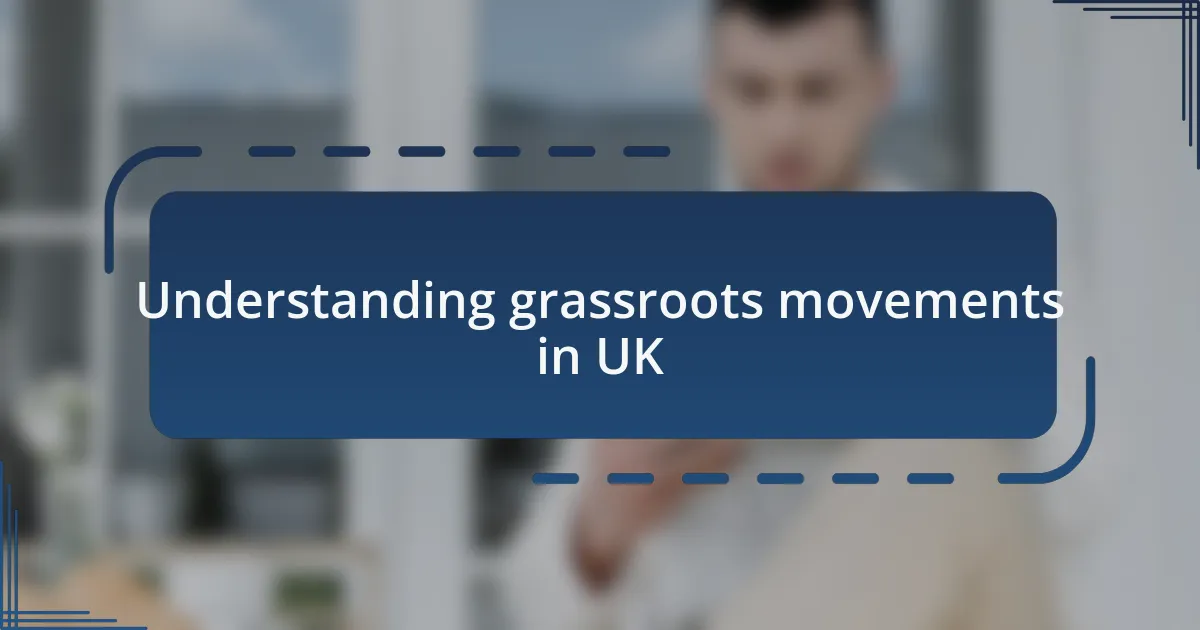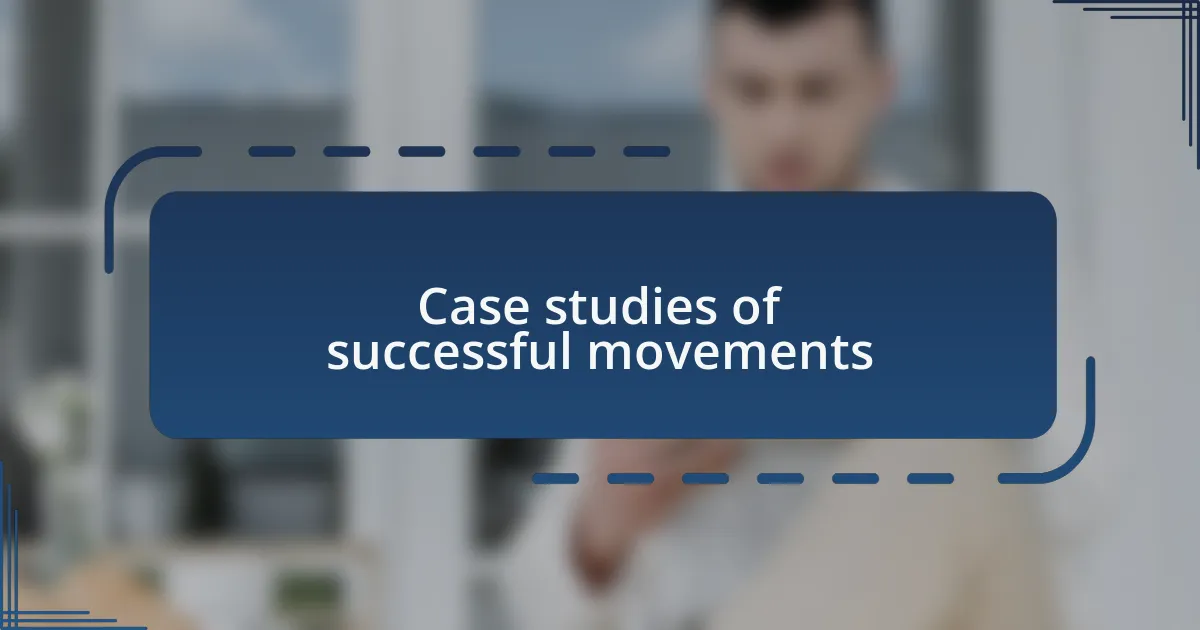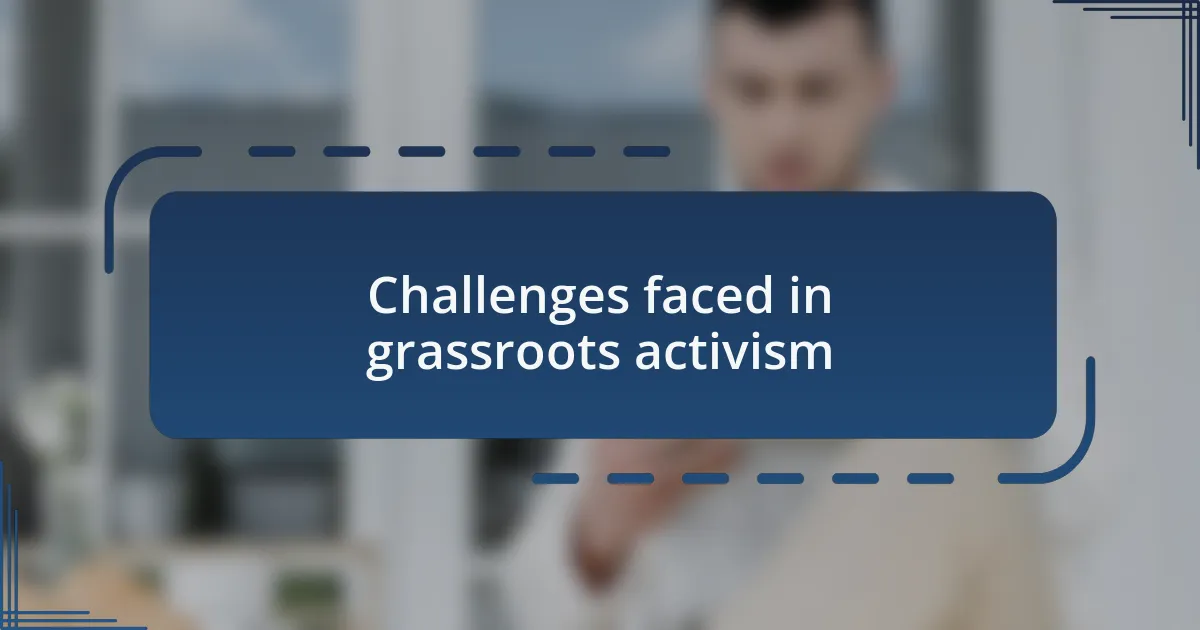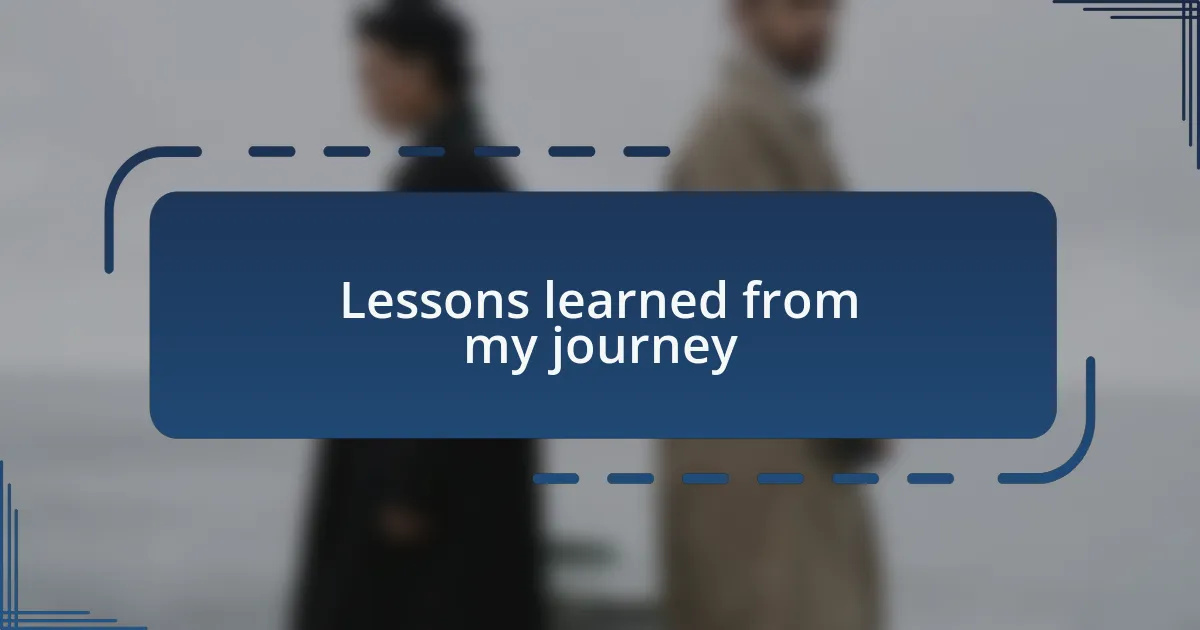Key takeaways:
- Grassroots movements empower ordinary citizens to enact change, beginning from local conversations and expanding into national campaigns.
- Successful examples include the “Justice for Grenfell” campaign, Women’s March, and Extinction Rebellion, demonstrating collective action for justice, equality, and climate action.
- Challenges such as funding, maintaining motivation, and opposition from established entities can hinder grassroots activism but also strengthen resilience.
- Key lessons include the importance of adaptability, harnessing the power of storytelling, and building relationships within the movement to enhance impact.

Understanding grassroots movements in UK
Grassroots movements in the UK embody the collective power of ordinary citizens rallying around a shared cause. I’ve witnessed the passion of these groups firsthand, like the fervor surrounding environmental issues or social justice initiatives. Have you ever felt that sense of unity when people come together for a common goal? It’s electrifying and highlights how grassroots movements can spark significant change.
These movements often start small, like a conversation in a pub or a local community hall, but they can quickly grow into national campaigns. I remember attending a local meeting about housing rights that transformed into a broader coalition across various neighborhoods. It made me realize how connected we all are; a single conversation might ignite a wave of activism, driving change in our communities.
The beauty of grassroots movements lies in their accessibility; anyone can join in and voice their opinion. Whether it’s organizing a cleanup day or lobbying for policy changes, these movements are driven by the belief that real change comes from the bottom up. Have you ever thought about how your voice could contribute to such movements? I encourage you to explore local initiatives that resonate with your values; you might discover a community of like-minded individuals eager to make a difference.

Case studies of successful movements
One striking example of a successful grassroots movement in the UK is the “Justice for Grenfell” campaign. Following the tragic Grenfell Tower fire in 2017, survivors and community members rallied together to demand accountability and better safety regulations. I remember attending one of their vigils, where the palpable sense of grief morphed into an unyielding resolve for justice. It reminded me how tragedy can galvanize a community into action, demanding change not just for themselves but for future generations.
Another case is the Women’s March in 2017, which saw thousands unite across the UK to advocate for gender equality and women’s rights. I couldn’t help but feel inspired as I stood among a vibrant crowd, each sign carrying the weight of personal stories and collective experiences. Do you ever wonder how a single event can amplify individual voices into a powerful chorus? The sheer diversity of the participants showcased that when we stand together for a shared cause, our impact can ripple far beyond the initial gathering.
The recent movement for climate action, particularly the work done by Extinction Rebellion, stands out as well. I still vividly recall the disruption in London, where activists flooded the streets demanding urgent governmental action on climate change. It was invigorating to see people from all walks of life come together, fueled by a shared urgency. Have you ever felt a moment so crucial that it sparks a desire to act? This movement exemplifies how grassroots activism can push critical issues to the forefront, forcing society to confront the realities of our changing planet.

My personal experience with movements
Participating in grassroots movements has profoundly shaped my understanding of civic engagement. I attended a local anti-fracking rally where the atmosphere buzzed with a sense of urgency and determination. It was eye-opening to witness people from different backgrounds come together, driven by a shared commitment to protect our environment. Have you ever felt that electric energy when a community rallies for a cause? It’s contagious.
One experience that stands out to me was during the Black Lives Matter protest in my city. I remember feeling a mixture of hope and frustration as I marched alongside others, chanting and holding signs. The stories shared by fellow participants were often heartbreaking, yet they reinforced the importance of our collective voice. It sparked a realization within me: change doesn’t occur in isolation; it happens when we amplify each other’s stories.
Reflecting on these moments, I’m reminded of the power of grassroots activism to create lasting impact. There’s something uniquely transformative about being part of a movement where each person’s presence matters. Can you see how these movements can foster a sense of belonging? It’s a reminder of our shared humanity and the difference we can make together.

Challenges faced in grassroots activism
One notable challenge in grassroots activism is the struggle for funding and resources. During one campaign I was involved in, we often found ourselves limited by a lack of financial support, which made it difficult to organize events or reach a wider audience. Have you ever felt the sting of ambition hampered by financial constraints? It can be disheartening, but it also forces us to think creatively and lean on community support.
Another major issue is maintaining motivation and momentum over time. I remember one local environmental initiative that started with so much excitement, yet as months passed, participants began to dwindle. It raised a question for me: How do we keep that initial spark alive? The reality is, without consistent engagement and fresh energy, even the most passionate movements can lose their drive.
Lastly, grassroots movements often face opposition from established entities, which can create an uphill battle. I experienced this firsthand when our group attempted to challenge local policies. There were times I felt overwhelmed by the pushback, and it made me question whether our efforts were in vain. Yet, these challenges also strengthen our resolve, reminding us that every act of resistance contributes to a larger narrative for change.

Lessons learned from my journey
Through my journey in grassroots movements, I’ve learned the importance of adaptability. I vividly recall one event where our venue fell through at the last minute. We were left scrambling for a solution, but the community rallied together and we quickly moved the event to a public park. Not only did this unexpected change foster an even stronger sense of community, but it also taught me that sometimes, the best moments arise from the challenges we face.
I’ve also come to appreciate the power of storytelling. I remember standing in front of a crowd, sharing personal experiences that connected our struggle to broader societal issues. The response was overwhelming. People didn’t just want strategies; they wanted to feel the heartbeat of our cause. This lesson reinforced my belief that sharing our stories can ignite passion and inspire action in ways that data alone cannot.
Lastly, I realized the value of building relationships within and outside the movement. One late night, brainstorming with fellow activists, we forged connections that later proved vital in amplifying our message. It hit me then that grassroots activism is not just about the cause; it’s about the people you meet along the way, each bringing unique perspectives and strengths to the table. How can we effectively push for change if we don’t first unite?